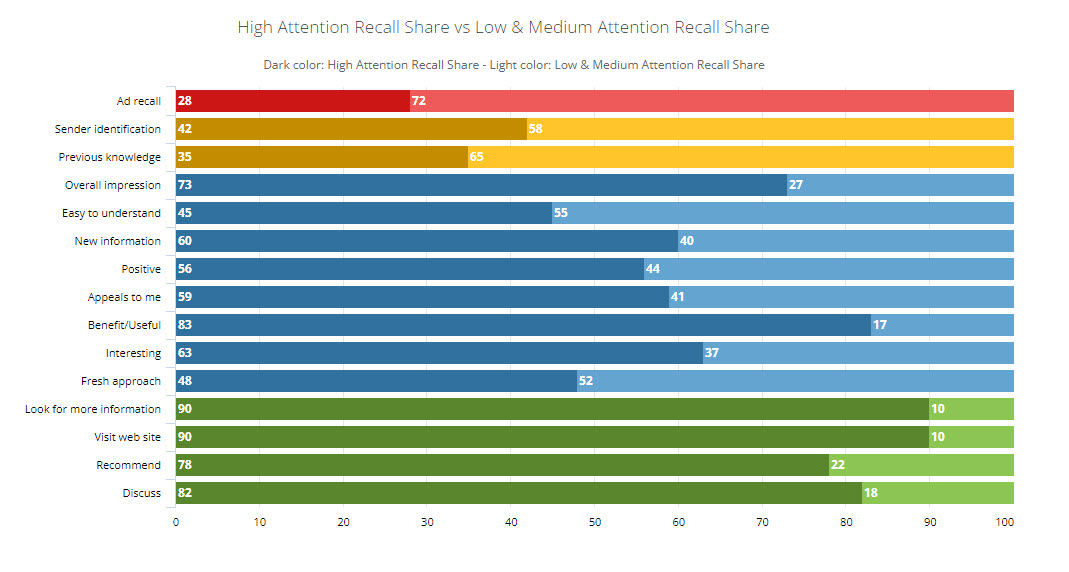RAM, one of the world’s leading media research companies with the world’s largest reference database in communications, is now launching a new, important Attention metric for all its advertising impact measurements, regardless of media channel. This key performance measure (KPI) will provide advertisers with valuable insights into which individuals have High Attention and how they influence the outcome of an advertising campaign.
RAM’s years of knowledge in the field show that it is a smaller part of those who notice a campaign, who really engage and are defined as the High Attention Recall target group. This group accounts for the majority of all action and brand reinforcement provided by the campaign.
The new measure High Attention takes into account both degree of observation (memory trace) in percentage and accuracy. Individuals with High Attention have both observed the advertisement and done so carefully, meaning they have spent more time with the campaign and thus have a deeper understanding and commitment to it. This group is the most valuable and impressionable audience to reach, making the metric invaluable to advertisers.
With this in-depth knowledge, advertisers can focus more on reaching, engaging and broadening the High Attention Recall group, improving the effectiveness and ROI of their advertising campaigns.
“The new Attention metric will become an indispensable part of successful marketing strategies for many advertisers and their marketing managers, a metric you don’t want to be without,” says Staffan Hultén, CEO and founder of RAM.
To develop and optimize the use of the new Attention metric, advertisers and marketers can implement the following strategies:
- Segment the audience: Use the insights from the Attention metric to identify and segment the audience based on their level of engagement. Focus on creating more personalized and relevant campaigns for those with High Attention Recall.
- Customize the campaign creative: Create more engaging and captivating content that makes individuals stick around and spend more time with the ad. This can include using strong visuals, stories and emotional triggers to capture attention.
- Test and measure effectiveness: By continuously testing and evaluating campaign effectiveness using the Attention metric, advertisers can improve their strategies and tactics to increase the percentage of individuals with High Attention Recall.
- Using the right media channels: With in-depth knowledge and understanding of which media channels work best to reach individuals with High Attention Recall and adjust the media budget accordingly.
- Timing and frequency: Optimize the timing and frequency of the campaign to maximize the engagement of the target audience. This may mean adjusting when and how often the campaign is shown to reach individuals when they are most receptive to the message.
- Optimizing the message: Adjust the message and tone of the campaign to resonate with the High Attention Recall group. This increases the opportunity to focus on value propositions, benefits or unique features that are most relevant and engaging to this group.
By using the new Attention metric as a foundation for developing and optimizing marketing strategies, advertisers and marketers can improve the effectiveness and ROI of their campaigns, as well as create a more meaningful and long-lasting relationship with their most valuable customers.


